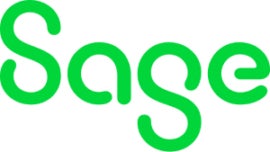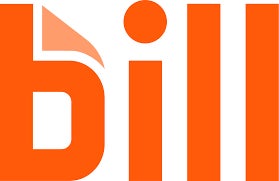When choosing the best accounts receivable software, I look for features that automate invoicing and payment reminders. I also look for clear reporting tools for tracking outstanding balances and the ability to monitor cash flow in real time. The software should also easily integrate with your existing accounting system.
I’ve put together this buyer’s guide to help you quickly understand your options and choose the best accounts receivable software for your unique needs.
Here’s a quick overview of the top vendors I’ll compare:
- Best for businesses with complex billing structures: Sage Intacct
- Best for integrating with existing accounting systems: BILL
- Best A/R software in an all-in-one platform: Intuit QuickBooks
- Best for integrated time tracking: FreshBooks
- Best for automation and predictive analytics: High Radius
Why you can trust TechRepublic
TechRepublic delivers thorough, expert-driven reviews, crafted by professionals with deep expertise in their respective domains. Our team includes experienced specialists and industry advisors with hands-on knowledge of the products they assess. Each piece is grounded in practical experience, powered by a strong grasp of the real-world business needs.
Quick comparison of the best accounts receivable software
| Sage Intacct | |||||
| BILL | |||||
| Intuit QuickBooks | |||||
| FreshBooks | |||||
| High Radius |
Sage Intacct: Best for businesses with complex billing structures

Sage Intacct helps business owners automate and manage invoicing and collections with accuracy and control. This product provides real-time access to customer balances, connects smoothly with the general ledger, and offers customizable workflows for revenue tracking. As a cloud-based solution, it scales easily with business growth and includes detailed reporting to help improve operations and cash flow.
Sage Intacct is especially strong for businesses with complex billing needs, such as subscription models, tiered pricing, or usage-based charges. It lets users automate advanced billing processes, which cuts down on manual work and mistakes. My favorite feature about this software is the ability to create invoices that combine charges from different contracts or entities. This is ideal for companies with multiple locations or business units.
Pricing
Sage Intacct does not publicize general pricing information. We recommend contacting their sales team for a custom quote.
Standout features
- Automated invoicing and collections: Streamlined accounts receivable processes through automated invoicing and collection
- Recurring invoice generation: Efficient management of subscription-based services through recurring invoices
- Flexible payment options: Offers customers various payment methods, including credit cards, checks, and ACH transfers
- Real-time reporting and dashboards: Comprehensive reporting options for customer aging, invoice analyses, and deferred revenue
- Seamless integration with CRM
systems: Capacity for integration with existing CRM for a consolidated view of quotes, sales orders, and invoices - Enhanced internal controls: Ability to define and implement automated internal control processes for accounts receivable workflows.
Pros and cons
| Pros | Cons |
|---|---|
|
|
BILL: Best for integrating with existing accounting systems

BILL is built for businesses that want to automate invoice creation, streamline customer payments, and improve cash flow visibility. Its user-friendly interface and powerful automation tools set BILL apart from the competition. I like that it supports digital invoicing, automatic payment reminders, and online payment options, which make it easy to manage receivables from anywhere.
BILL is especially effective for businesses that rely on syncing with existing general ledger accounting systems. Its two-way integrations ensure that invoices, payments, and customer interaction is reflected in real time, eliminating duplicate data entry and reducing reconciliation errors.
Pricing
- Essentials Plan: $45 per user per month
- Team Plan: $55 per user per month
- Corporate Plan: $79 per user per month
- Enterprise Plan: Custom pricing; contact bill.com for details
Standout features
- Customer portal access: Options for a dedicated customer bill payment portal
- Automated payment matching: Incoming payments are automatically matched to outstanding invoices
- Invoice status tracking: Option to monitor the status of your invoices in real-time and track the status of invoices sent, viewed, and paid
- Automated late fee application: Ability to implement automatic late fee charges on overdue invoices
Pros and cons
| Pros | Cons |
|---|---|
|
|
Intuit QuickBooks: Best A/R software in an all-in-one platform

Intuit QuickBooks stands out for its ability to automate invoicing, track payments in real time, and sync outside financial data within a single dashboard. My favorite part of this A/R platform is its deep integration with QuickBooks’ broader accounting suite, providing for cohesive cash flow management without additional tools. Businesses benefit from customizable invoice templates, built-in payment processing, and intelligent reminders that reduce manual follow-ups.
QuickBooks is the best choice for businesses seeking an all-in-one accounts receivable solution because it combines A/R tools with bookkeeping, reporting, tax prep, and payroll in one cohesive system. This level of integration keeps financial data aligned, reducing errors and saving time.
Pricing
- QuickBooks Solopreneur: $20 per month
This plan is designed for self-employed individuals. - QuickBooks Simple Start: $35 per month
This plan is ideal for new, single-member businesses. - QuickBooks Online Essentials: $65 per month
This plan is most suitable for small businesses with multiple members - QuickBooks Online Plus: $99 per month
Geared towards growing businesses - QuickBooks Online Advanced: $235 per month
Designed for larger businesses with complex needs
Standout features
- Automated payment reminders: QuickBooks Online automates key tasks like invoice creation and payment tracking
- Detailed accounts receivable aging reports: QuickBooks Online lets you quickly identify overdue accounts and generate detailed reports
- Customizable invoice templates: QuickBooks allows users to customize invoice templates to reflect their brand, providing a professional appearance that enhances customer interactions.
- Multiple payment options: Intuit QuickBooks supports various payment methods, including credit and debit cards, and Apple Pay
- Integration with other software tools: QuickBooks can integrate with other software tools, such as project management or time-tracking applications.
Pros and cons
| Pros | Cons |
|---|---|
|
|
FreshBooks: Best for integrated time tracking

FreshBooks stands out for its intuitive, service-based approach to managing receivables. I like that it offers automatic payment reminders and easy processing of client retainers — all at an uncommonly low price point. Its ease of use, clean interface, and client-centric tools make it a top choice for service-based professionals who want to get paid faster and manage client relationships more effectively.
FreshBooks is the best choice for businesses that rely on integrated time tracking because it ties billable hours directly to invoices without external tools. Users can track time by client or project, log entries through the web or mobile app, and convert those tracked hours into branded invoices in just a few clicks. This seamless workflow reduces errors and keeps billable time from slipping through the cracks.
Pricing
- Lite: $21 per month
Designed for freelancers and small businesses managing up to 5 clients - Plus: $36 per month
Suitable for growing businesses handling up to 50 clients - Premium: $70 per month
Intended for expanding businesses with up to 500 clients - Select: Contact FreshBooks for pricing
This option is for businesses requiring advanced features and tailored support.
Standout features
- Time tracking integration: FreshBooks allows users to track time spent on projects and seamlessly convert those hours into invoices
- Expense tracking: Users can capture receipts by photo and record them as expenses, link them to bank or credit card transactions, and mark them as billable for inclusion on invoices.
- Project accounting: FreshBooks offers integrated project management tools that connect directly with its invoicing system, allowing users to efficiently track timelines and oversee project workflows.
- Tax and finance reporting: FreshBooks offers tax and financial reports designed to support tax preparation and provide a clearer view of business performance.
- Multiple currency support: The platform supports close to fourteen languages and 170 currencies, making it ideal for global operations.
Pros and cons
| Pros | Cons |
|---|---|
|
|
High Radius: Best for automation and predictive analytics

HighRadius delivers high-grade accounts receivable automation tailored to businesses with high invoice volumes and complex credit-to-cash cycles. I really like the combination of AI-powered tools with deep ERP integration. This blend eliminates manual tasks like cash application and collections follow-ups. HighRadius is a strong choice for large or fast-growing businesses looking to centralize and optimize the receivables process.
What makes HighRadius the best fit for businesses prioritizing automation and predictive analytics is its advanced AI engine.This tool not only automates workflows but also forecasts cash flow, customer payment behavior, and potential delinquencies. By leveraging historical data and machine learning, High Radius facilitates smarter, faster decisions with real-time data.
Pricing
High Radius does not publicize general pricing information. We recommend contacting their sales team for a custom quote.
Standout features
- Credit management: Automates credit risk evaluation with integrations to leading credit agencies, facilitating fast-track credit approvals and proactive risk mitigation.
- AI-powered collections management: Automatically ranks accounts, dispatches timely payment reminders, and supports intelligent follow-ups to reduce manual work and speed up collections.
- Predictive analytics: Employs AI to identify potential payment delays before they occur, allowing for early action to be taken to optimize receivables performance
- Robust customer self-service portal: Offers a self-service platform for customers to handle billing, payments, and dispute resolution
Pros and cons
| Pros | Cons |
|---|---|
|
|
Methodology
I thoroughly researched each provider featured in this guide by closely reviewing the information on their official websites and analyzing sample data. I used common painpoints expressed on user reviews to identify the strengths and weaknesses of each product. I focused primarily on standard features such as price, software integration, and the overall customer experience.
How do I choose the best accounts receivable software for my business?
Here are three main factors to consider when choosing accounts receivable software:
- Identify an option that suits your industry
The best accounts receivable software is the one that fits how you do business. For example, service-based professionals may prioritize time tracking and client invoicing tools. This is an area where FreshBooks excels. Larger enterprises with high transaction volumes may benefit from advanced automation and cash application tools like those offered by HighRadius. Choose software that complements your daily operations. - Consider integration and scalability
Your A/R software should integrate with your existing systems and grow with your business. QuickBooks stands out for its seamless integration with bookkeeping and payroll, making it a strong all-in-one option for small to midsize businesses. If you’re using a CRM, ERP, or payment platform, make sure your A/R software can integrate without costly customization. - Balance budget and business size
Affordability matters, but so does value. Freelancers and small business owners might find FreshBooks to be a cost-effective solution. Larger teams with complex needs may justify investing in HighRadius for its enterprise-level features. Pick a solution that delivers the most critical features without overextending your budget.
Frequently asked questions (FAQs)
What features should I look for in accounts receivable software?
Look for automation tools, integration with accounting systems, data security, and any other unique features that can streamline billing and improve cash flow.
How can A/R software automation improve cash flow?
By automating invoicing, payment reminders, and collections, the payment process is accelerated, and errors are reduced.
Is it important for accounts receivable software to integrate with existing accounting systems?
Yes, seamless integration ensures accurate data flow between systems, reduces manual data entry errors, and provides a comprehensive view of financial health.
What are the benefits of having a client payment portal in accounts receivable software?
A client payment portal allows customers to conveniently pay invoices directly online, which reduces payment delays and improves the overall payment experience.

